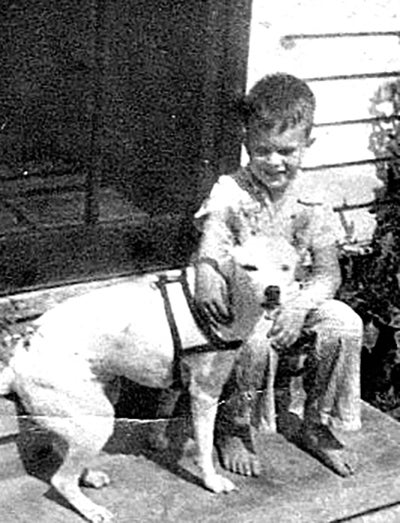And Now You Know: When Columbian and Peruvian Navies were in Orange
Published 12:59 am Saturday, July 17, 2021

- And Now You Know
|
Getting your Trinity Audio player ready...
|
In November 1960, officers and men from the navies of Columbia and Peru were at the Texas Group of the Atlantic Reserve Fleet, the “Navy Base” in Orange. The two contingents were in Orange to reactivate two seagoing tugs for their navies.
Officers at the Orange base pointed out that the two ships and two floating drydocks were purchased outright and were not military grants-in-aid. Both countries were bearing all costs of activation, including hull work being done at local shipyards.
“The governments of both countries are paying for all costs involved. The men and officers are fed and billeted on the base. We are supplying technical assistance by making skilled naval personnel available as advisors,” naval base officials said.
The AFT-70, the Choctaw, was going to the Columbian navy and the AFT-90, the Pinto, was going to the Peruvian navy. Both were seagoing tugs 205 feet long, drawing a 17 foot draft, and with a 39 foot beam.
The Choctaw was built in 1943 in Charleston and decommissioned in 1947. Her sister ship, Pinto, was built the same year and decommissioned in 1946.
Lt. Jamie Torres, 35, veteran of 14 years’ service in the Columbian navy was from Cartagena. Lt. Torres was a graduate of the Columbian Naval Academy at Cartagena. Cartagena is the homeport of the Columbian navy which at that time consisted of 25 ships.
There was a contingent of two officers and 18 enlisted men from Columbia in Orange along with another contingent of five officers and 30 enlisted men at Green Cove Springs, Florida where they were getting a floating dry dock ready for the tow to Columbia,
Lt. Torres only spoke a little English and was aided by Storekeeper Second Class Alveno Martinez. Martinez had been assigned to the Texas Group base for a little over a year. He spoke fluent Spanish and served as Lt. Torres’ interpreter.
There was some confusion with languages as some most Columbians and Peruvians spoke no English and most American sailors spoke no Spanish. Through the use of a sort of sign language, the work was accomplished smoothly.
The biggest difference was in food. For the Columbians and Peruvians, the food was not spicy enough. Lt. Torres said, “We are more used to Mexican rice, salads, and more vegetables. French toast for breakfast? It was a new experience for all of us.”
There would be two more officers and 23 enlisted men of the Columbian Navy coming in to Orange around November 15 to assist in cleanup and ship movement. Lt. Torres estimated it would take around 11 weeks to finish the work. Departure was set for the middle of January. From Orange the ship and crew would go to Jacksonville, Florida to pick up the drydock and then proceed to Cartagena.
The Peruvian contingent was headed by Lt. Cmdr. Julio Zapata, 33, a veteran of 16 years’ service. There were five officers and 50 enlisted men from Peru to reactivate the Pinto. Cmdr. Zapata was a graduate of the Peruvian Naval Academy.
Cmdr. Zapata estimated it would take 65 days to put the Pinto in operating condition. They would leave Orange and sail to San Diego to pick up ta floating drydock for delivery to Callao, Peru, the homeport of the Peruvian Navy. The trip would cover about 4,000 miles and take three weeks to complete.
Cmdr. Zapata said the ship considering its age is in good condition. He also expected to leave Orange in Mid-January. The Cmdr. Was highly please with the cooperation of the officers and men of the Orange naval base.
The Peruvian navy dates back to 1920 with the creation of an American naval mission to Peru.
One sailor stationed at Orange said of the operation, “Those ships will do both of those countries a lot more good than being tied up here in the Sabine River as a part of the mothball fleet.”
“And now you know.”






